Introduction
It wasn’t exactly love at first taste, the day I tried kimchi. It came as a side dish at a Korean restaurant, in Bangkok, Thailand. The friends, who had invited me, were keen for me to try this little bowl of bright red vegetables. Their enthusiasm gave me high expectations, so it came as quite a surprise to find myself with a mouthful of spicy sour cabbage. As I was their guest, I didn’t complain, just smiled and said, ‘hmmmmm interesting flavour, strong.’ By mixing the kimchi with the other food to mask its taste, like a good guest, I was able to finish my plate.
Over the next few months, however, I found myself eating at Korean restaurants more often. My tastes were changing fast, now, instead of mixing the kimchi with other foods to hide its flavour, I wolfed it down and ordered more. It wasn’t long before I happily visited Korean restaurants alone, sat at a table for one and ordered extra kimchi with everything. I became an addict and over the following years, living in various countries throughout Asia, barely a few days went by without at least one dish of kimchi.
Time For Drastic Action
I currently live in northern Peru. A country with its own culinary delights, and a real foodies heaven. But, in all the time I’ve been here, I haven’t had even one sniff of kimchi. It’s now time for drastic action. If I’m unable to buy kimchi, I’m going to make it myself.
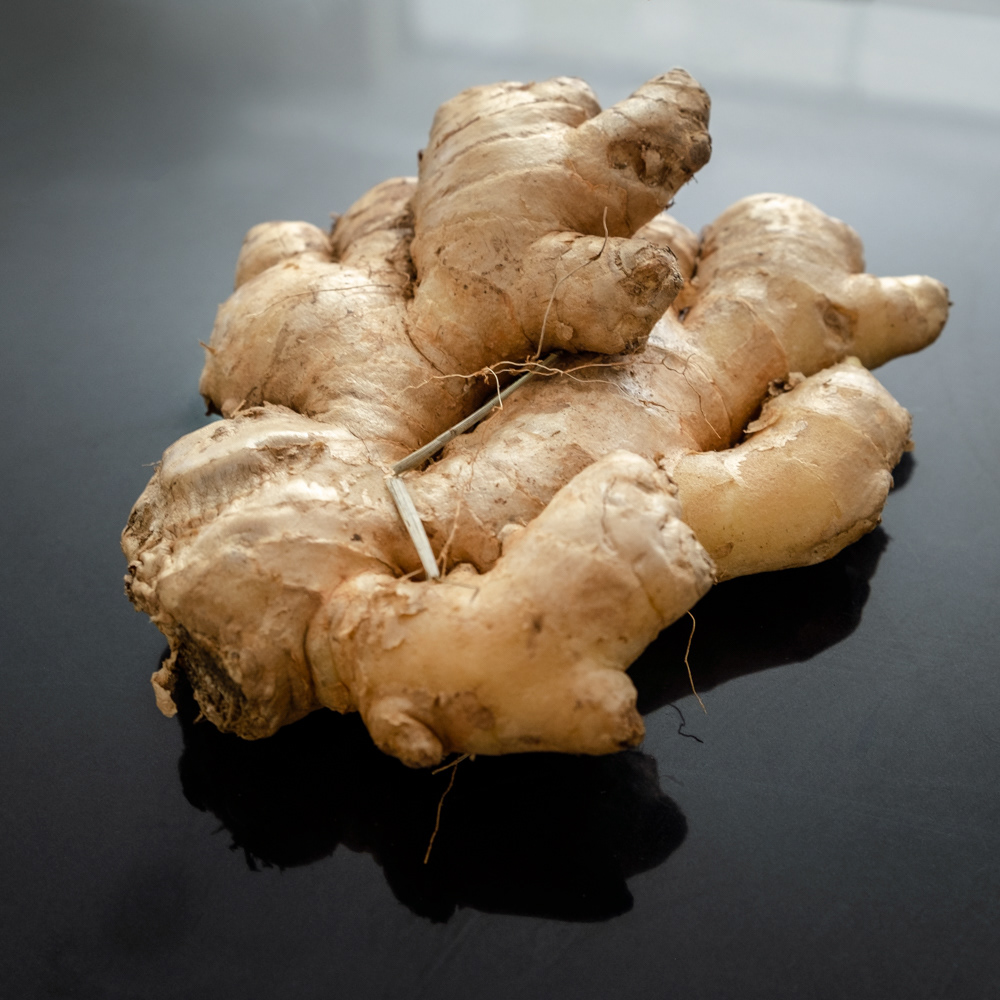
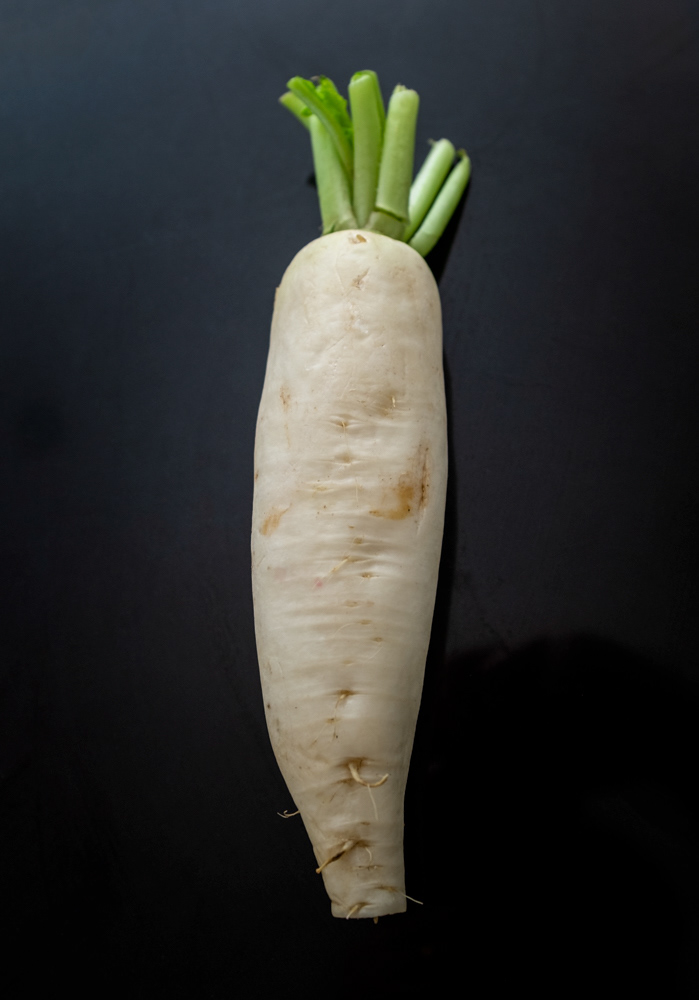
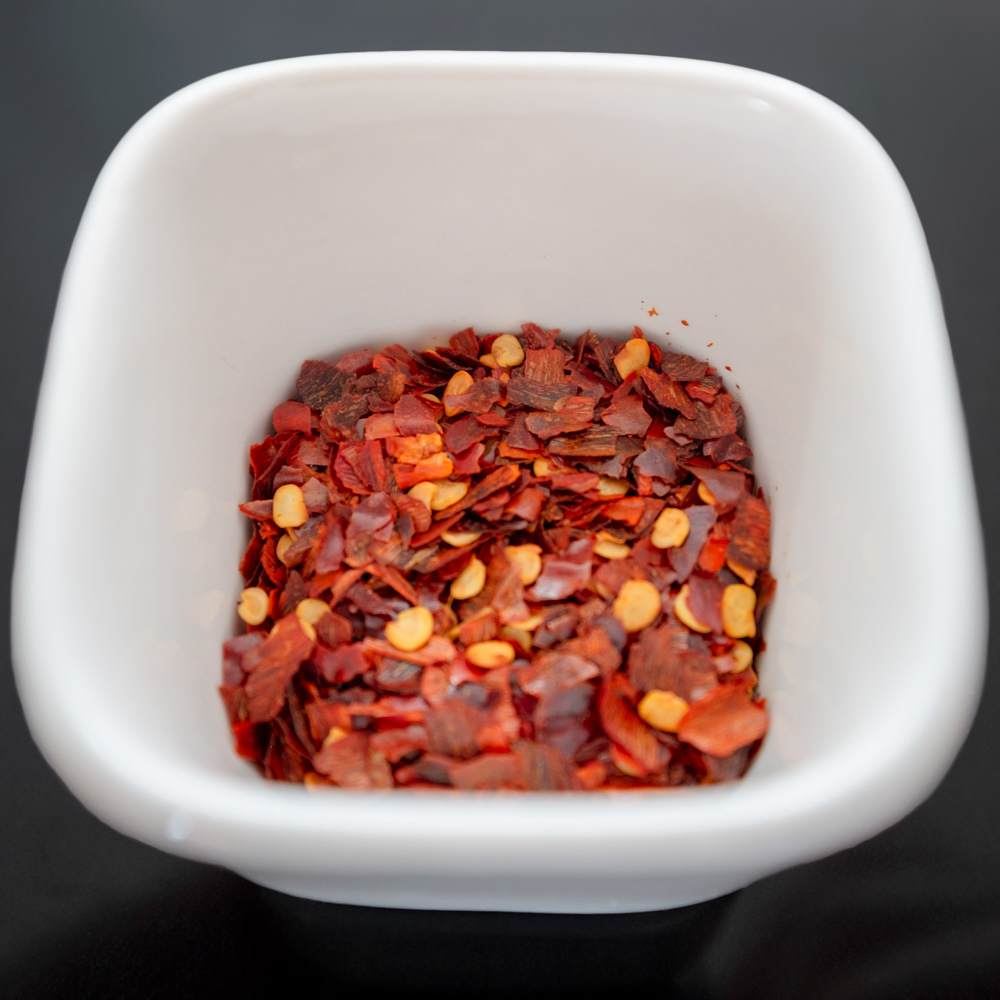
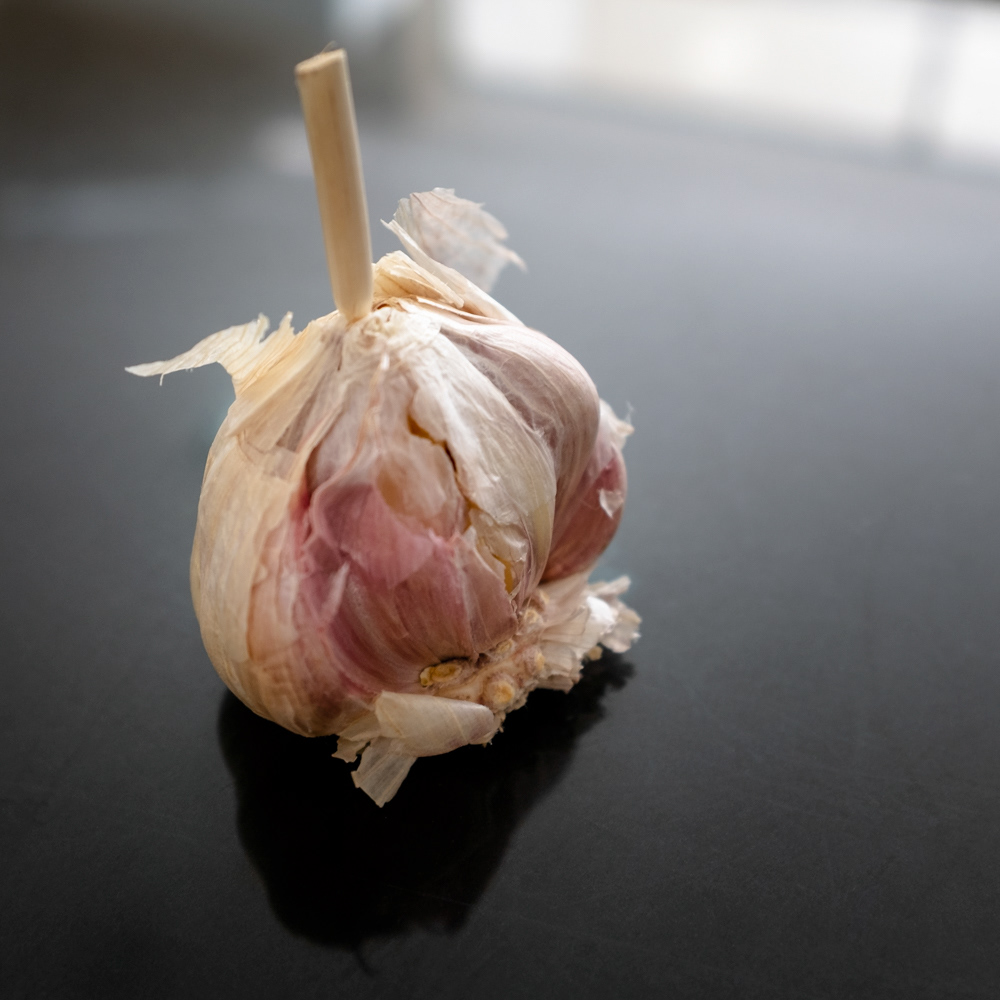
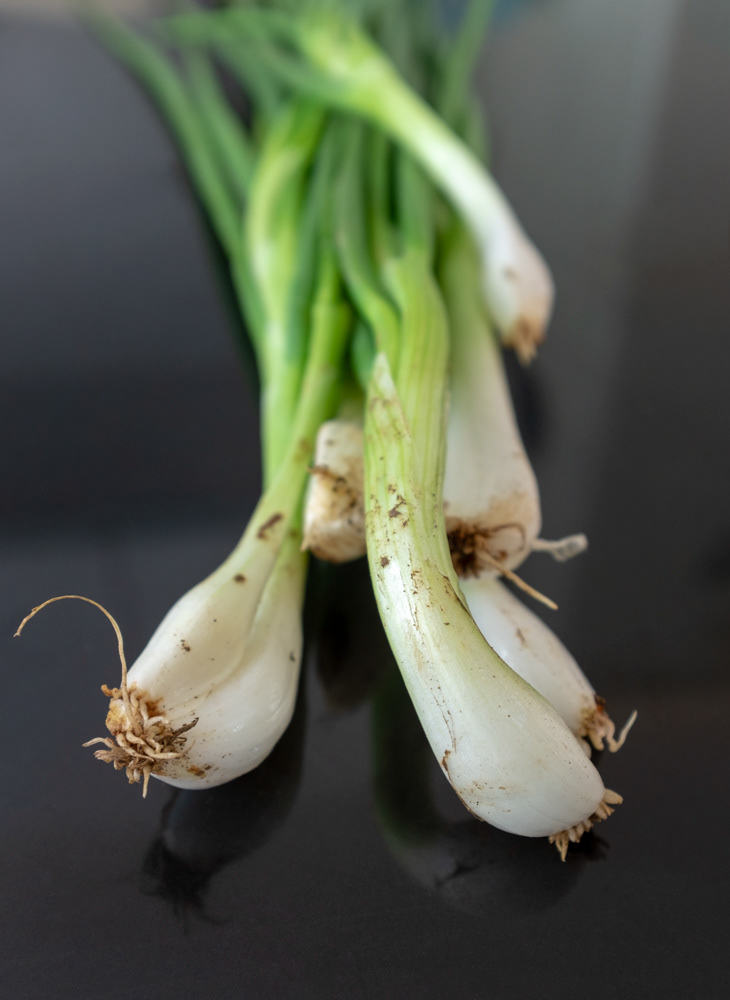
Ingredients
I know kimchi is basically pickled cabbage with spicy red chilies. But an internet search revealed there are several types of kimchi. In Korea, it’s commonly homemade, and it seems everybody has their own little variations on the basic recipe. My kimchi is also going to have a few variations, but these are forced upon me rather than creative choices. The main problem I’m facing is getting the right ingredients. The basic ingredients seem to be:
- Napa cabbage
- Korean radish, or daikon
- Scallions (spring onions)
- (Kosher) salt
- Gochugaru (red chilli flakes or powder)
- Ginger
- Garlic
- Sugar
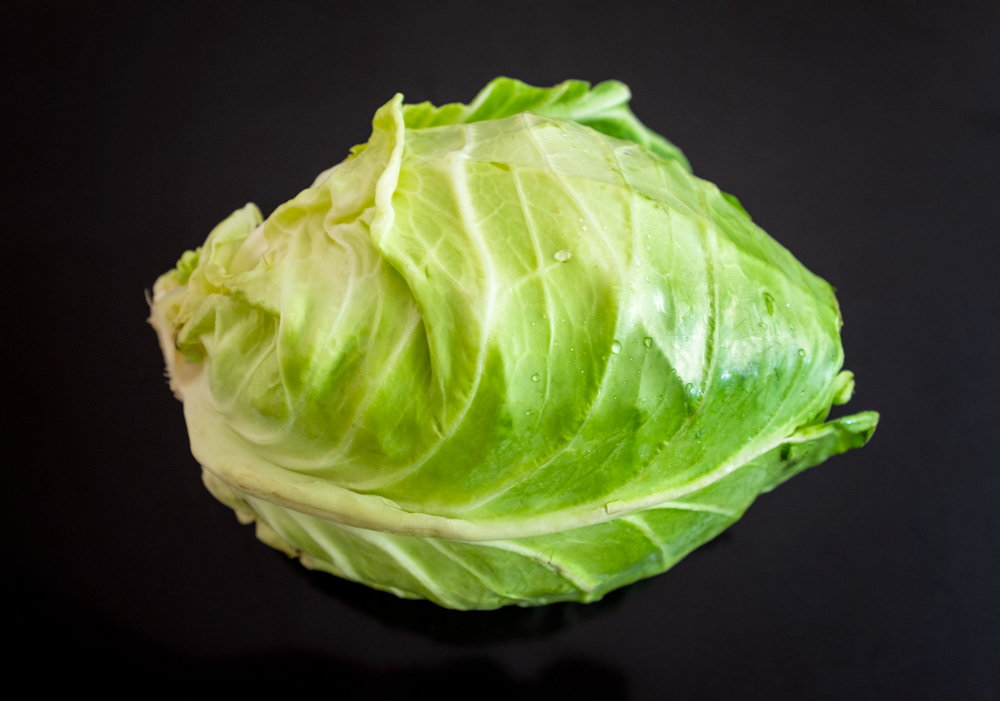

🔺Ordinary cabbage.
Substitutions
- The main ingredient, napa cabbage, I couldn’t find anywhere, so I’m settling for a standard cabbage.
- The second vegetable, Korean radish or daikon, again I couldn’t find. Instead, I’ve found something they call here, 'nabo.' It's a white root vegetable that looks somewhat similar to a Korean radish. (The internet translates, ‘nabo,’ to, ‘turnip,’ but I’m hoping it’s basically the same thing).
- The salt too may be a problem. Some recipes call for ‘kosher’ salt, stating that anti-caking agents and other things added to normal salt can hinder the fermentation process. I couldn’t find any of this 'kosher' salt either, so I’m just using ordinary table salt and hoping for the best.
- I also, unsurprisingly, couldn’t find Gochugaru, but this seems to be mostly red chilli flakes or powder. So I’ve bought a packet of dried red chilli flakes.
- The remaining ingredients, spring onions (scallions), garlic, ginger, sugar, have been easy enough to get hold of.
🔺The paste.
Preparation
To make my kimchi, I cut the cabbage into cubes and threw it in a large bowl with a quarter cup of salt. I mixed it together for a while, then poured in enough water to cover the cabbage. I put a tight fitting lid on the bowl and left it to stand for two hours. In the meantime, I cut a few spring onions into short pieces, and the nabo into thin chips.
I also made a paste by mixing two pieces of grated ginger, six cloves of grated garlic, a spoonful of sugar, and three or four spoonfuls of the chilli flakes, (actually I didn’t measure it, I just guessed). I added a little water and mixed it all together.
After two hours, I rinsed off the cabbage several times and let it drain in a colander for twenty minutes. I then threw everything into one large bowl, and gently mixed it all together by hand. When all the cabbage and vegetables were evenly coated with the paste, I spooned it out into two jars, packed it down tightly, and sealed on the lids.
Fermentation
Now I have to wait for the fermentation process to take place. I’ve placed the jars in a cool dry place where I’ll leave them for the next five days or so. Given that I've winged it a bit with the ingredients, it remains to be seen whether my little experiment will be a success.
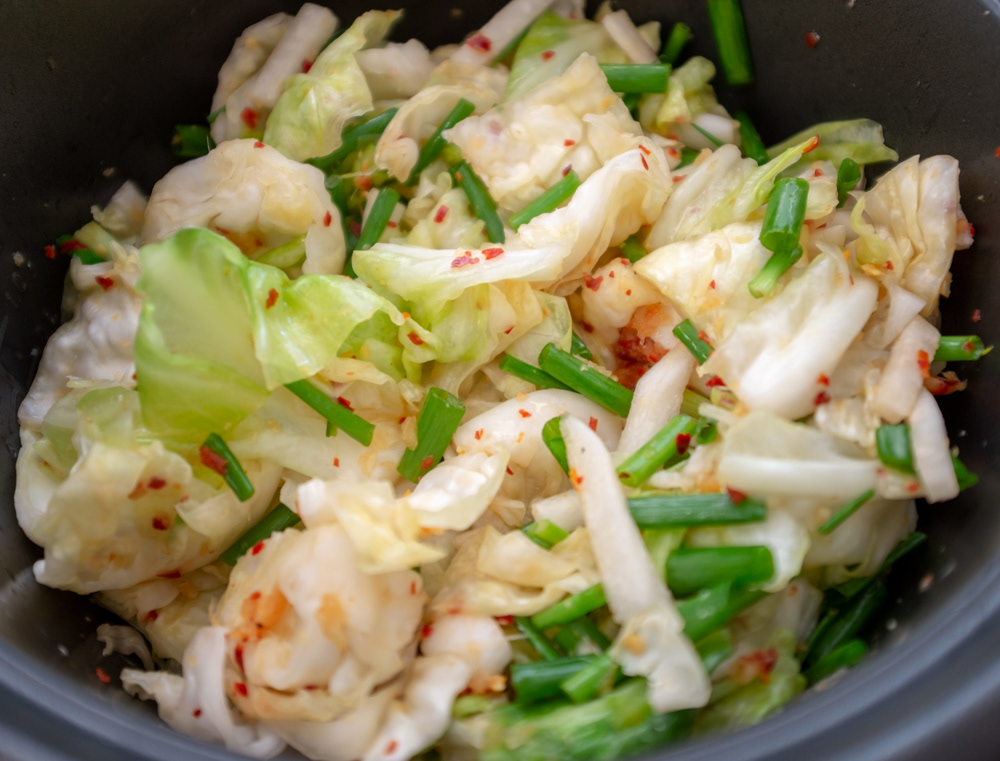
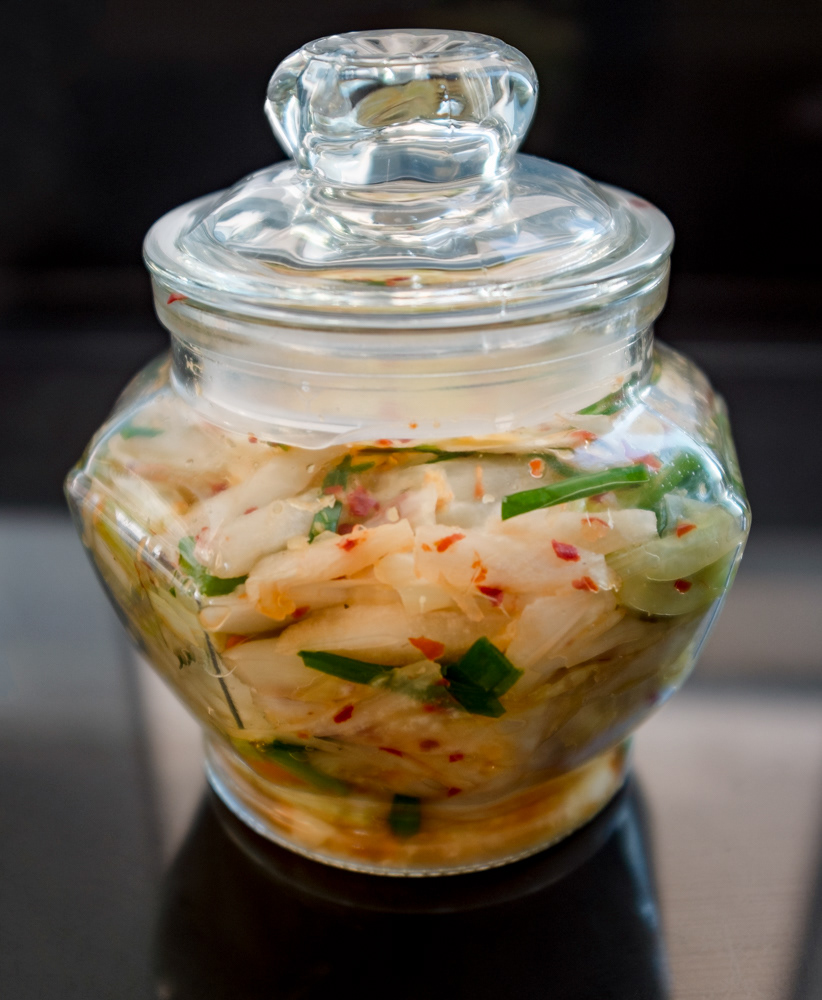
🔺The kimchi packed into a jar. Not as red as I was hoping, but maybe that will change as it ferments.
Coming Soon
Look out for part two of this post for updates and developments. Plus, more about the origins and health benefits of kimchi.
Also see Part Two










